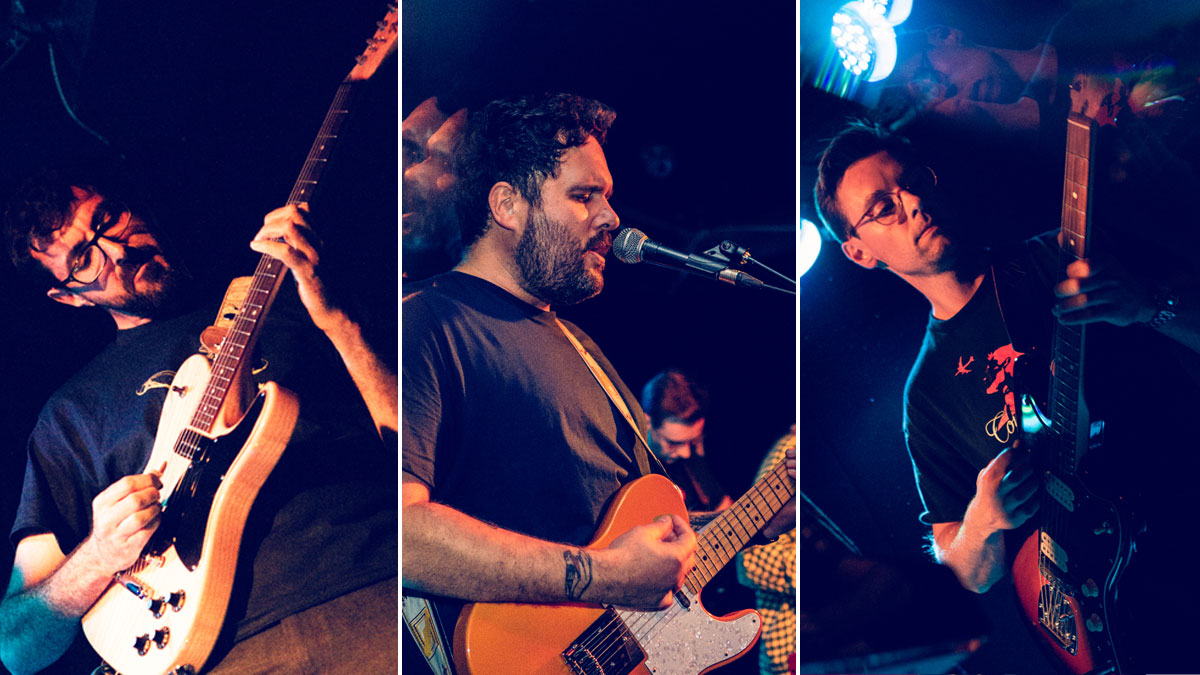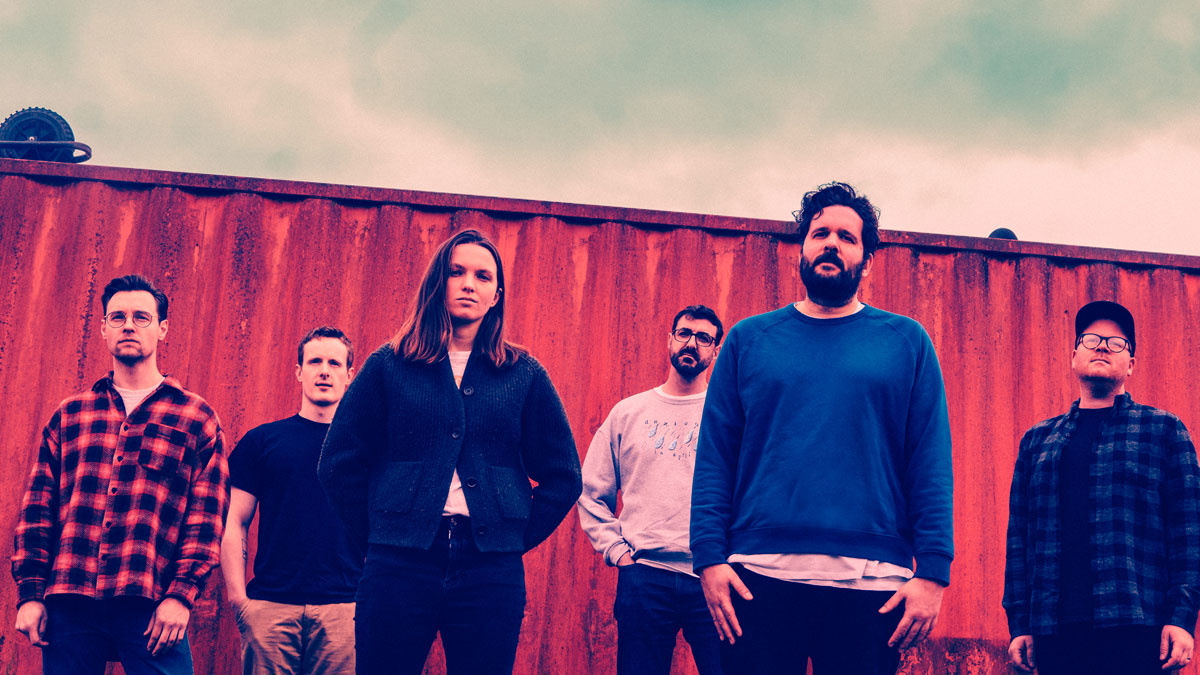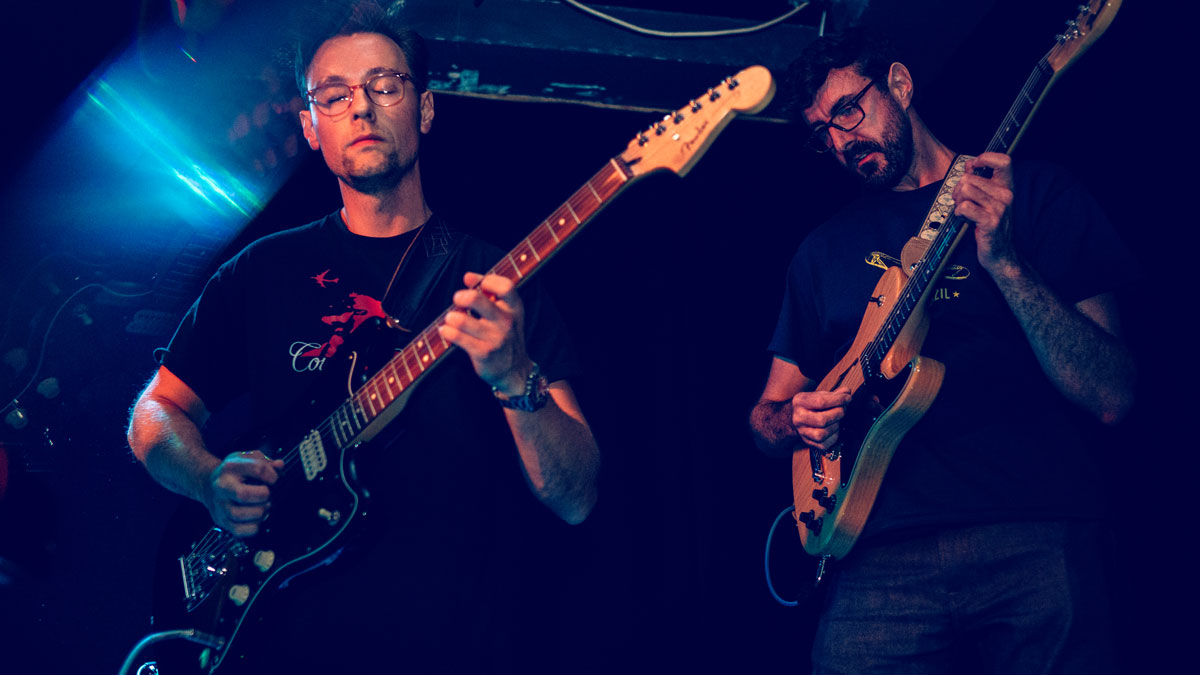
Since rock music began, there simply haven’t been that many bands who have truly conquered the three-guitarist dynamic. Sure, Foo Fighters, Periphery, Radiohead, Iron Maiden, Pearl Jam and a handful of others have all nailed it in recent times, but the amount of head scratching required to bring the list deep into double figures may result in a bloody scalp – you have been warned.
Now, hailing from Watford, ‘glock-rock’ emo sextet Lakes join the club. They specialize in math-pop time signatures and intricately orchestrated triple guitar arrangements with nifty tapping aplenty – and yes, they have a glockenspiel player.
Even more unusually, it’s their drummer, Matt Shaw, who writes most of the guitar parts – and almost all of them are in DADGAD, FACGCE or open G tunings because he considers standard “the most awkward, horrible tuning imaginable.”
“It started with me, mucking around at home making these demos,” he tells us. “You tend to keep adding guitar parts, so all the songs started to have this crazy, layered amount of guitars. Then, when we thought, ‘Let’s play this live,’ we needed to get a lot of guitarists to pull it off.”
Cue Roberto Cappellina, Rob Vacher and Gareth Arthur – who each bring a different skill set and a distinct bank of tones to the Lakes guitar fest.
Simplifying what is no doubt a complex and well-honed musical partnership, Vacher summarizes thus: “Roberto is quite chord-based because he has the challenge of trying to sing as well, and then Gareth and I pick up the fiddly bits either side of the chords.”
Thanks to having a drummer masterminding the operation, such “fiddly bits” tend to include holding down complex polyrhythms and keeping up with time signature switch-ups.
“I just love time signatures,” beams Shaw. “Or, what I specifically love is attempting to use time signatures in a catchy and poppy way that some people don’t even notice. If we can have a whole song in seven and no-one's even noticed and they can still sing along, then that’s just the ultimate for me.”
“Often, with bands where there’s three guitarists, it’s actually quite rare that they’re playing three different things,” adds Cappellina. But, the band’s third album Elysian Skies demonstrates the sheer scope of what can be achieved when multiple tones, rhythms and player personalities are intertwined with sensitivity and imagination.
As Cappellina puts it, “There’s an equilibrium and it all slots together.”

As well as their clearly defined roles, personal pickup, pedal and amp preferences ensure that the Lakes six-stringers have every sonic base covered.
For Cappellina, a pair of out-of-the-box, single coil-equipped Fender Teles are all he needs to get by. “It’s that classic Midwest emo clean sound,” he smiles.
He runs these through a Marshall ORI50H, and the heroes of his ‘board are a Keeley Compressor Plus to “draw out that proper, clean crispiness of a Telecaster” and an Electro-Harmonix Neo Clone in homage to Kurt Cobain’s iconic chorus sound.
For Arthur, who describes his role as “predominantly a live guitarist,” a Fender Jim Adkins JA-90 Telecaster Thinline is the only axe that’ll adequately “cut the mustard” in the onstage mix.
We definitely have that twinkly emo sound generally, but as things have progressed, some of the sounds are a bit bigger and meatier
Rob Vacher
“I’m not overly a fan of humbuckers, nor am I a fan of single coils,” he explains, suggesting that the Jimmy Eat World frontman's signature model was the first to take him to “the promised land of P-90 guitars”.
Amp-wise, he favors a Fender DeVille and can’t live without his ThorpyFX ‘The Dane’ Overdrive and Boost pedal. “The boost on that lets you sweep the lows and my tone live is a bit bassier,” he explains. An Electro-Harmonix Freeze and a Fender Marine Layer Reverb also do a lot of heavy lifting to complete his rich and almost infinitely sustaining sound.
Finally, there’s Vacher. “I’ve broken the Lakes mold a bit,” he confesses, pointing to his number one guitar, a Jazzmaster HH. “It’s got the humbuckers in it, and Matt hates me for doing that because it’s broken the whole aesthetic of all the Telecasters!”
“It came with a slightly more rounded tone that’s less on the jangly side, which I prefer,” he reasons in defence of his workhorse. “I think it works in the mix with Roberto cutting through.”
But Vacher will also reach for a Telecaster Deluxe – this time with Wide Range humbuckers – whenever he needs to “beef up the sound a bit,” and his amp of choice is a Blackstar HT50 MK II.
“We definitely have that twinkly emo sound generally, but as things have progressed, some of the sounds are a bit bigger and meatier, so that fitted well with that,” he adds.
As their biggest, meatiest and most ambitious effort yet, Lakes also enlisted producer Tom Peters (Alpha Male Tea Party, The Fall, Vennart) to help fulfill their Elysian Skies vision – and they raided his sizable gear collection while they were at it.
“This was the first time we’ve ever recorded with someone else,” explains Shaw. “It’s always just been DIY with minimal gear and hardly any pedals, which is why this album sounds so different. We knew if we went to him, he’d have this array of amps and pedals and we could just play and see what happened.”

Said array included a Victory Sheriff 44, a Selmer Treble and Bass 50, a Fender Tweed Twin, a Marshall JMP and a Soldano Astroverb 16, as well as what Shaw describes as “the most insane pedalboard in the world” - one which purportedly takes two people to lift.
But it was Peters’ Strymon TimeLine delay that caused the headiest case of pedal envy, and which colored the record most of all. “We used it on every single song. We got super-into programming the BPM to get super-accurate delays,” enthuses Shaw. “We went crazy with it, so Rob had to buy a BPM delay pedal.”
A TC Electronic ND-1 Nova Delay now does the job outside of the studio. “It’s kind of like trying to marry up what’s been recorded and produced with what’s going on live,” explains Vacher.
“That’s one of the fun challenges – and it’s just an excuse to buy toys!”
- Elysian Skies is out on April 28 via Big Scary Monsters. Lakes tour the UK this May. Tickets are available now.







